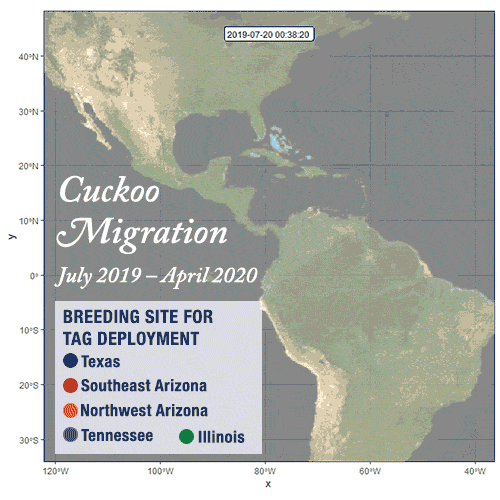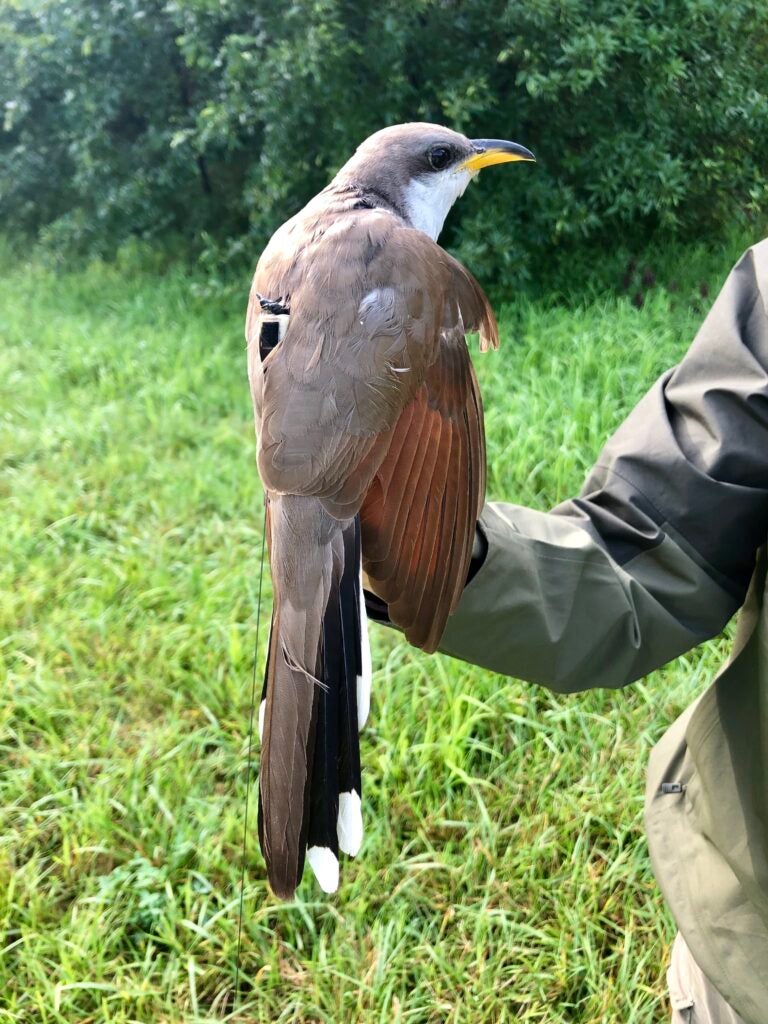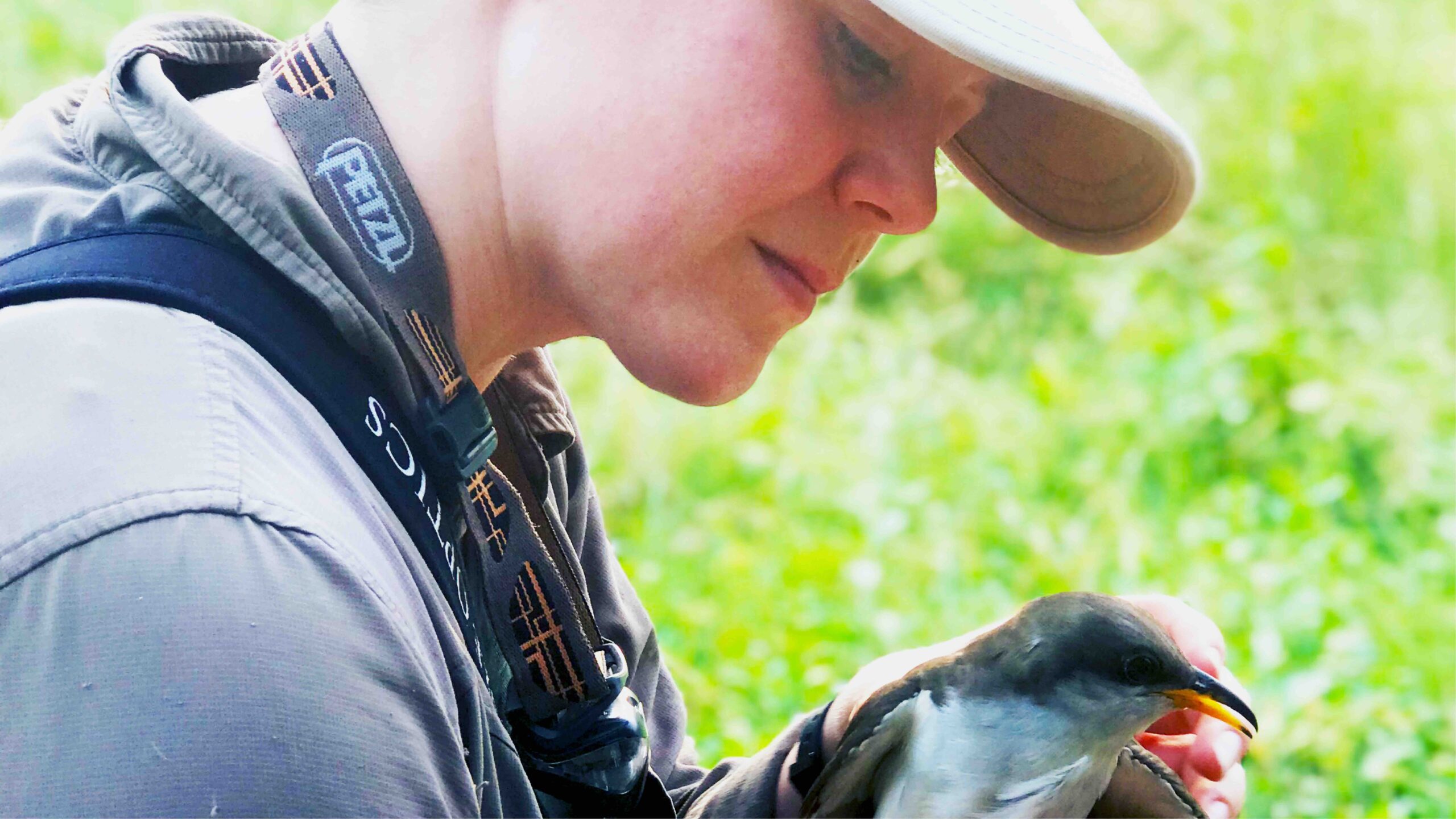Greater Distance Moved by Migratory Bird Has Large Implications for Conservation
It’s well known that birds fly south for the winter, but just how far do they go? New research by post-doctoral fellow Calandra Stanley shows that yellow-billed cuckoos travel several thousands of kilometers in short spans of time during seasonal migrations.
Her findings, which were recently featured in The New York Times as part of a greater study on animal migration, reveal previously unknown facts about avian behavior and could contribute to a greater understanding of why species are in decline.
Mapping Migration

Stanley began working on this research in 2019 with Peter Marra, director of the Georgetown Environmental Initiative. The pair decided to study yellow-billed cuckoos due to their large population declines and ability to easily carry the weighter satellite tracking tags.
“When we first started tracking the cuckoos we only had a vague understanding of where they went, so we coordinated with partners in Western, Eastern, Southern and Midwestern sites in the United States to determine the birds’ migration patterns,” says Stanley. “After we tagged the birds, we found that they actually spend the majority of the year in the area of South America known as Gran Chaco, which is currently an area that is under heavy developmental pressure.”
Gran Chaco is a region that comprises Argentina, Paraguay, and Bolivia, which is currently undergoing heavy deforestation. Stanley hopes to use Argos system satellite data to compare the declining number of cuckoos to increasing levels of habitat loss.
This is important as migratory birds are a great indicator for ecologists and conservation biologists of the impact of environmental changes on wildlife.
“Migratory birds can tell you a lot because they exist in so many different places and rely on a variety of habitats,” says Stanley. “They are key insights that provide answers to the main question our work is centered around: how can we protect species?”
In North America, the migratory bird population is dropping rapidly. According to a study published by Marra in Science, over 3 billion birds have been lost in the past 50 years, but it is currently unknown exactly why this is happening. Stanley explains that prior to advancements in tracking technologies, scientists have known very little about migration patterns in most species, not just birds.
“Being able to track birds and other animals is crucial for us to understand their full annual cycle and therefore pinpoint what and where the stress points are for them,” she explains. “Without tracking technology we never would have known about their migration or movement behavior. The yellow-billed cuckoo for example is moving the majority of the time.”
ICARUS Initiative

This project is part of a growing body of research to track many different species of animals across the globe. The International Cooperation for Animal Research Using Space, or ICARUS project, in a multi-decade project that will collect data about the migration patterns of a variety of species from different countries. Though Stanley is using a different data model, her research will contribute to this greater field of understanding.
In his interview with The New York Times, Marra says that ICARUS will be an “incredibly powerful tool to address enormously vexing problems in conservation biology.”
Emily Williams, a Ph.D. candidate in the Department of Biology hopes to use the smallest ICARUS tags to track the migration of American robins next year.
“Though an extremely common backyard bird in the United States, very little is known about the migration patterns of the American robins and how it varies across their range from fully sedentary populations to partially migratory populations to fully migratory populations,” says Stanley.
While Stanley and Williams will not be directly working together, their collective research will help scientists better understand bird migration and necessary conservation efforts to protect bird species in the future.
